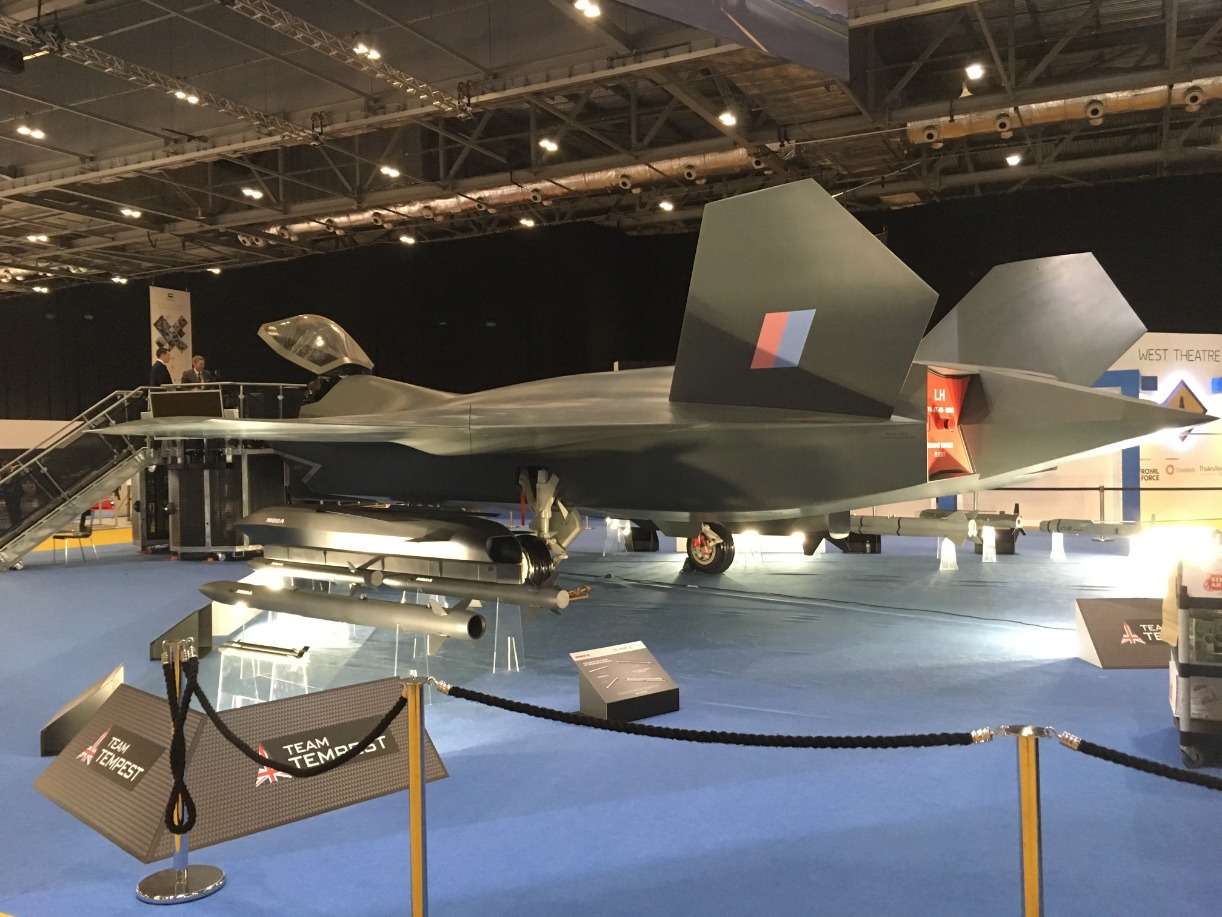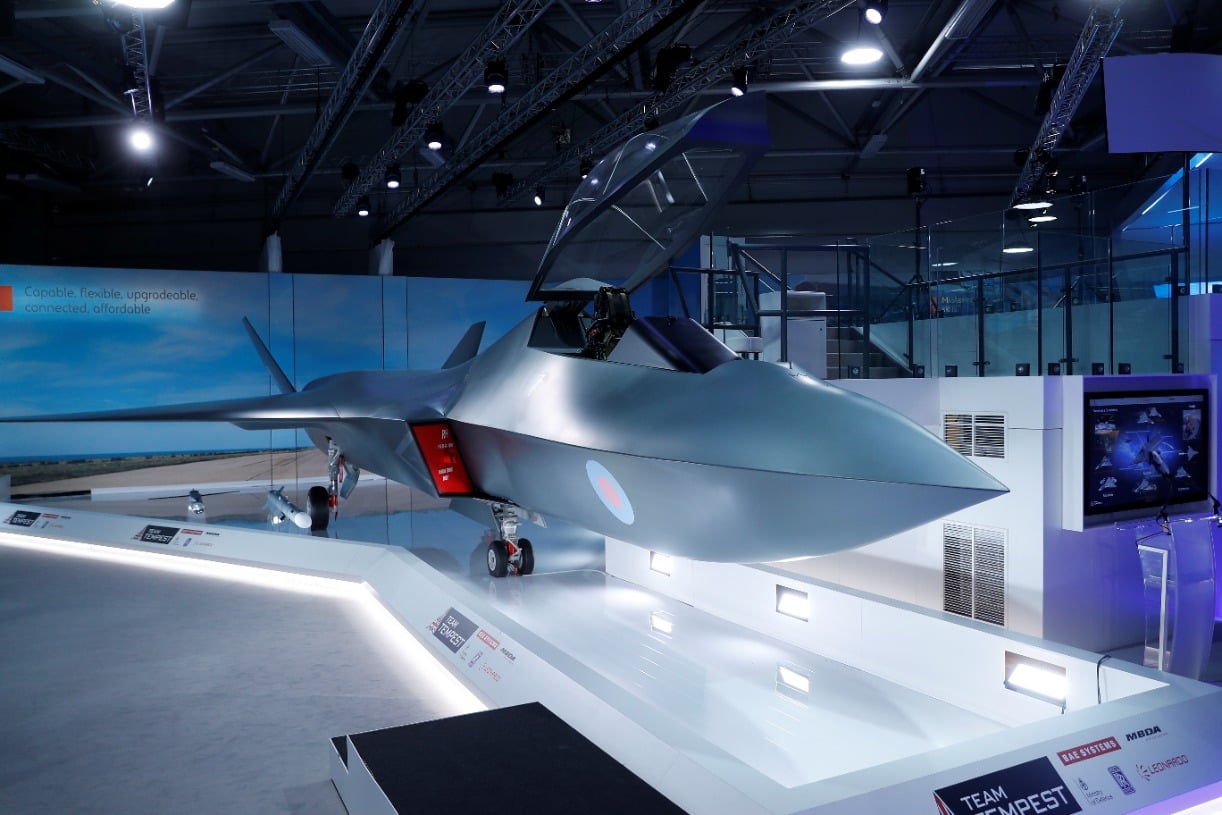Tempest: This Might Be the Ultimate 6th Generation Fighter
The UK Ministry of Defense is leading the Tempest program, a sixth-generation fighter jet project, through BAE Systems and other European manufacturers.
Summary: The UK Ministry of Defense is leading the Tempest program, a sixth-generation fighter jet project, through BAE Systems and other European manufacturers.

Key Points:
-This aircraft, expected to be operational by 2035, will feature advanced technologies like deep learning AI, drone swarm coordination, directed-energy weapons, a virtual cockpit in-helmet, and hypersonic weapons.
-Designed for modularity and stealth, the Tempest aims to perform multiple combat and reconnaissance roles. Its outward design includes delta wings, outward-pointing vertical stabilizers, and internal twin engines to minimize radar cross-section. The sophisticated pilot helmet will integrate AI to assist in high-g maneuvers and other critical flight operations.
UK's Tempest Program: Unveiling the Future of Sixth-Generation Fighter Jets
Aerospace technology has developed rapidly since the inception of manned flight some 120 years ago. So it should not come as a surprise that several nations are already working to develop a sixth-generation fighter jet. One such project is the United Kingdom’s Tempest program, also known as the Future Combat Air System (FCAS).
No one has ever fielded a sixth-generation fighter. In fact, only three nations have even fielded a fifth-generation fighter. The U.S. led the way with the F-22 Raptor, still the world’s pre-eminent air superiority fighter, and the F-35 Lightning II, a multirole fighter that is the world’s best aircraft with respect to sensor fusion and data interconnectivity. China and Russia have also fielded fifth-generation fighters, the J-20 and Su-57, respectively, but with less success.
It may seem strange, then, that nations which have not developed a fifth-generation fighter are already working to develop sixth-generation technology.
The UK Ministry of Defense’s effort to create a sixth-generation fighter is led by BAE Systems. The FCAS project includes a contingent of prominent European weapons manufacturers, including Leonardo, Rolls-Royce, and MBDA UK. The British government is expected to spend 2 billion pounds on the project’s initial phase by 2025.

Development of the Tempest began nine years ago, in 2015, when the Ministry of Defense published its Air Strategy. Elements of the strategy included continued development of the Eurofighter Typhoon; study of Typhoon replacement programs; an effort to “build on or establish new [international] partnerships to deliver future requirements;” a focus on affordability; and implementation of the Future Combat Air System Technology Initiative.
The Air Strategy described a potential Tempest as “an aircraft, manned or unmanned, whose prime function is to conduct air-to-air and/or air-to-surface combat operations in a hostile and/or contested environment, whilst having the ability to concurrently conduct surveillance, reconnaissance, electronic warfare and command and control tasks.”
That description doesn’t give the public much to go on, but the Tempest should incorporate several new technological features, including deep learning AI, the ability to fly unmanned drone swarms, directed-energy weapons, a virtual cockpit in-helmet, and hypersonic weapons.
The Tempest should also feature technologies already incorporated in fifth-generation platforms – supercruise, thrust vectoring, internal weapons bays, and stealth characteristics. Stealth is becoming a de facto requirement in new aircraft. Air defense technology has improved to the point where non-stealth aircraft can be categorically denied.
The Tempest is expected to be modular so that the aircraft will be easy to upgrade and can be easily adapted for different missions.
One of the more curious aspects of the Tempest is the expected ability to control drone swarms. The American sixth-generation effort, the NGAD, is also being designed to coordinate drones, so it seems like the drone swarm is going to be a fundamental feature of sixth-generation aircraft.

The Tempest’s outward design has been unveiled. The airframe will feature delta wings and outward-pointing vertical stabilizers. The fuselage has a slightly raised rear section to accommodate S-shaped ducting behind the twin-engine inlets – a feature that will reduce the jet’s radar cross section (RCS). The jet’s two engines are situated deep within the fuselage – again, to minimize RCS.
Following trends in aerospace development, the Tempest’s pilot helmet will be sophisticated, with the ability to monitor brain and other medical data. For each pilot, the helmet will help accumulate a unique biometric and psychometric database, which will grow the more the pilot flies. The helmet, paired with advanced AI, is expected to assist the pilot when needed. For example, if the pilot blacks out during a high-g maneuver, the AI can step in and handle the flight controls. Similarly, if the pilot needs to focus elsewhere, such as when guiding a weapon after firing, the AI can help handle the aircraft.
About the Author: Harrison Kass
Harrison Kass is a defense and national security writer with over 1,300 total pieces on issues involving global affairs. An attorney, pilot, guitarist, and minor pro hockey player, Harrison joined the US Air Force as a Pilot Trainee but was medically discharged. Harrison holds a BA from Lake Forest College, a JD from the University of Oregon, and an MA from New York University. Harrison listens to Dokken.
All images are Creative Commons.


